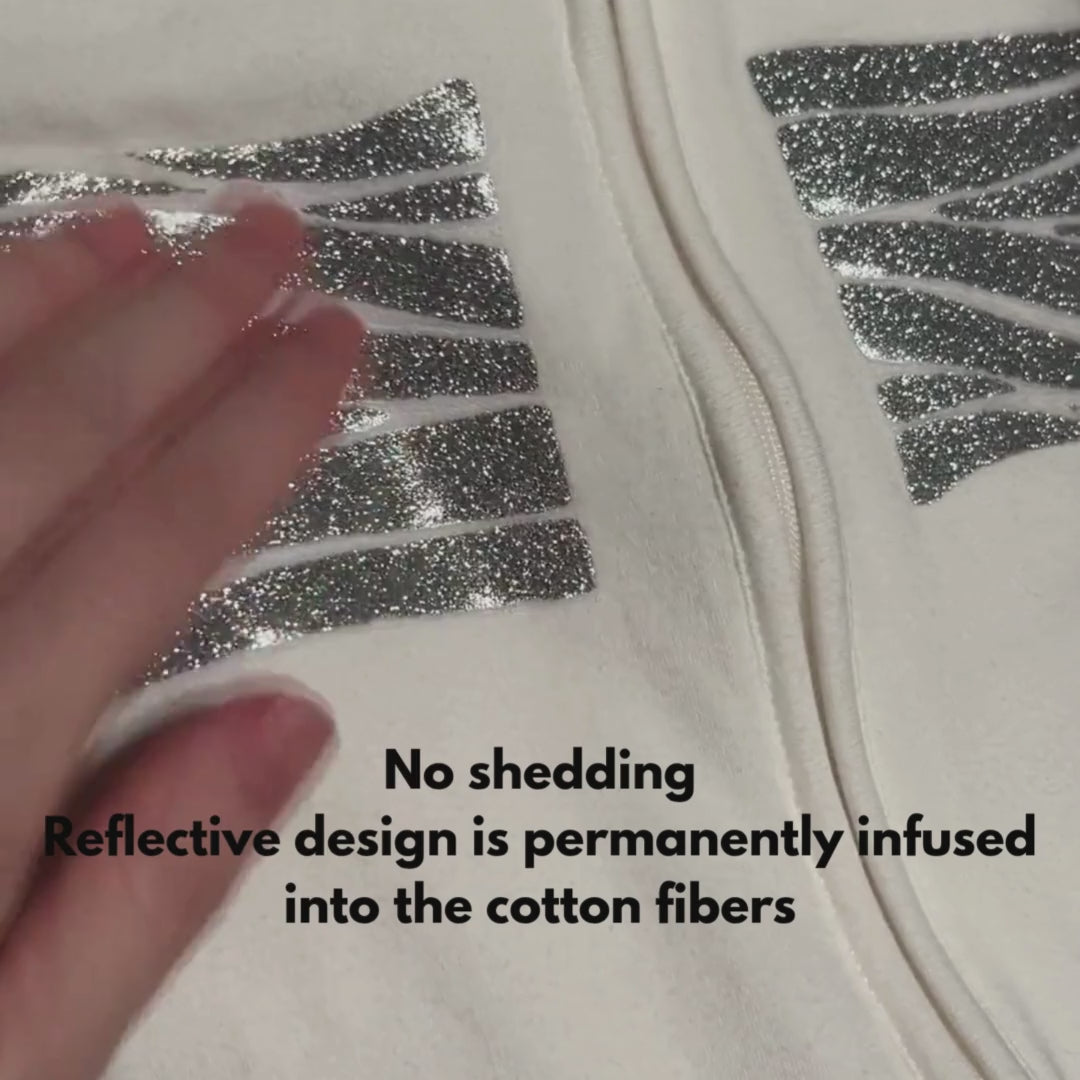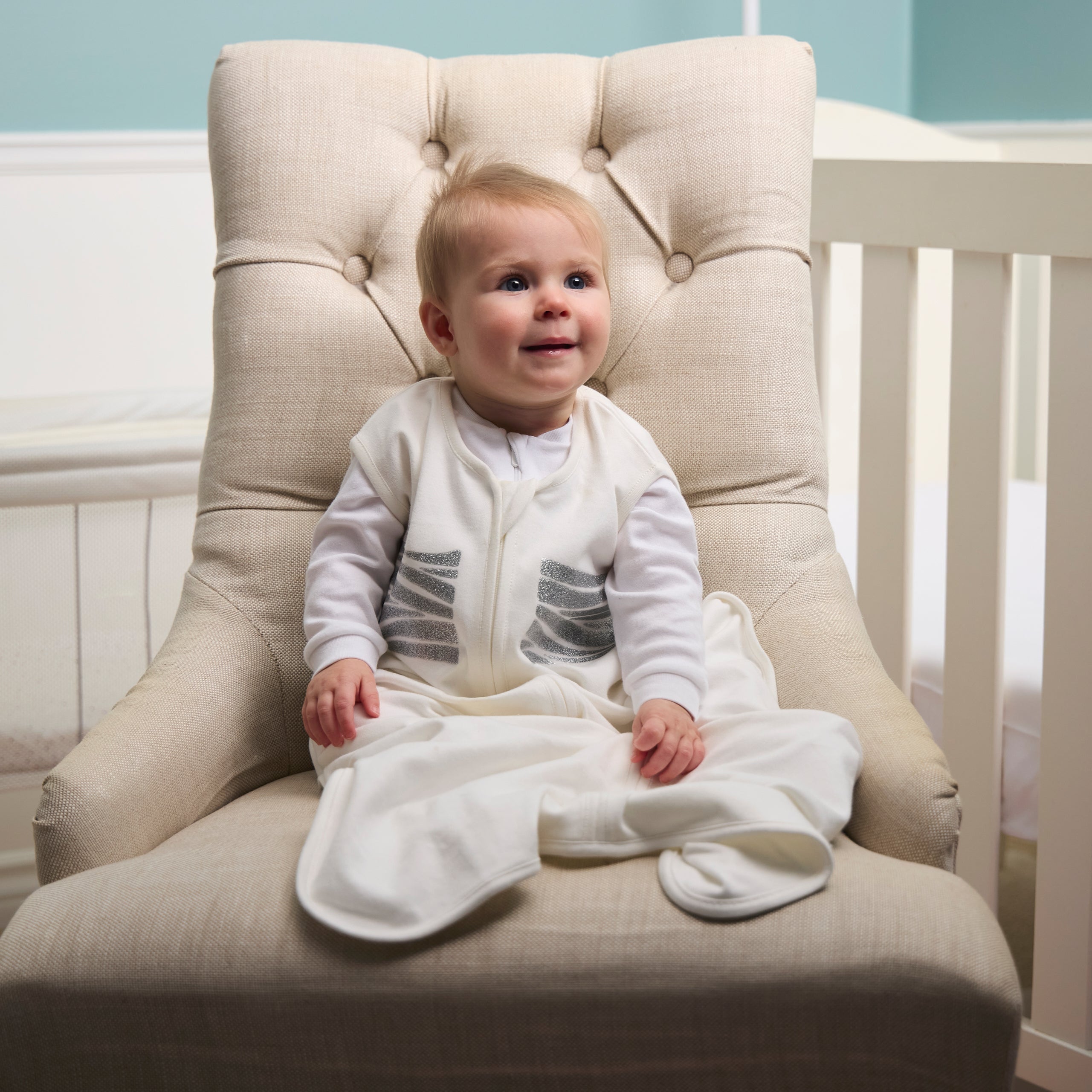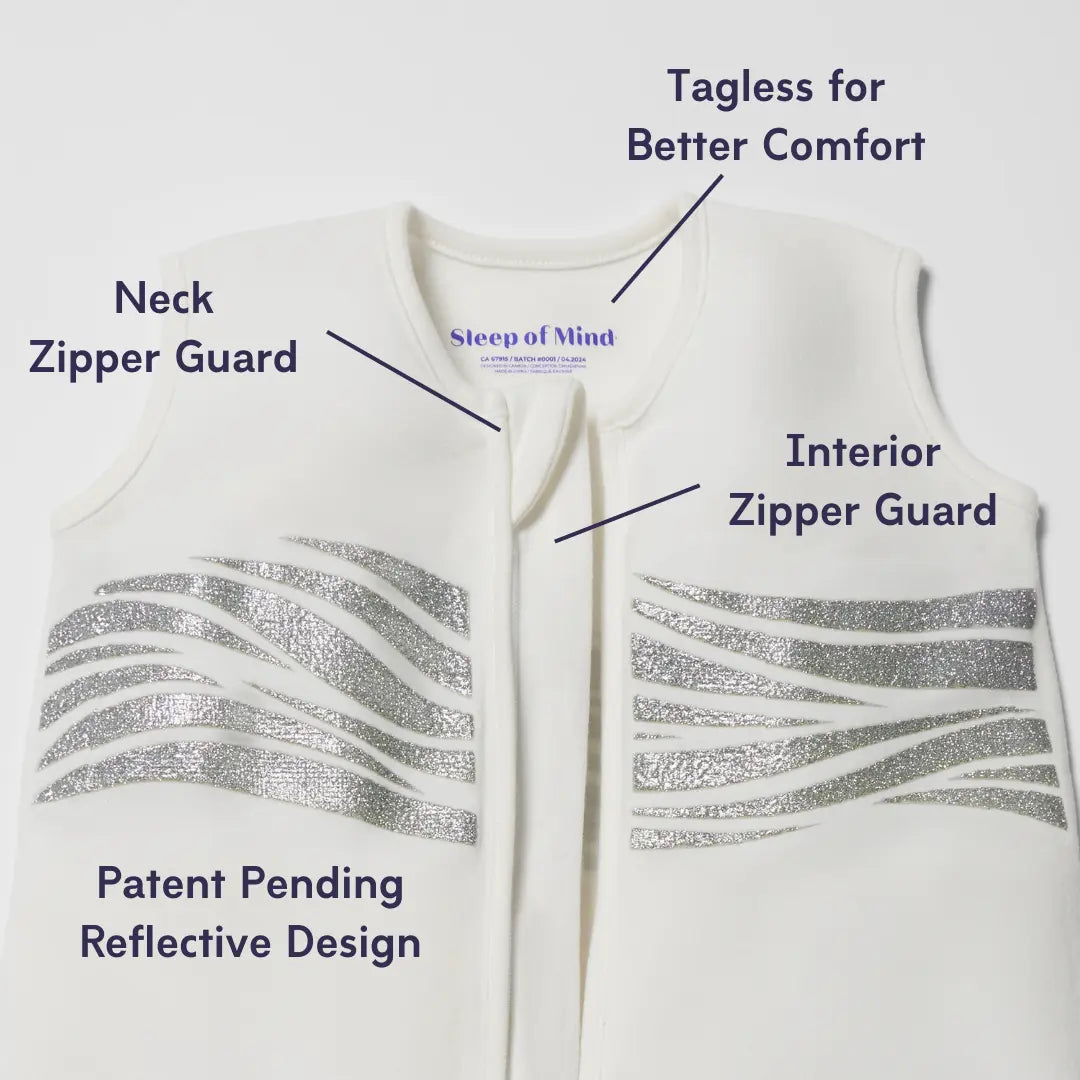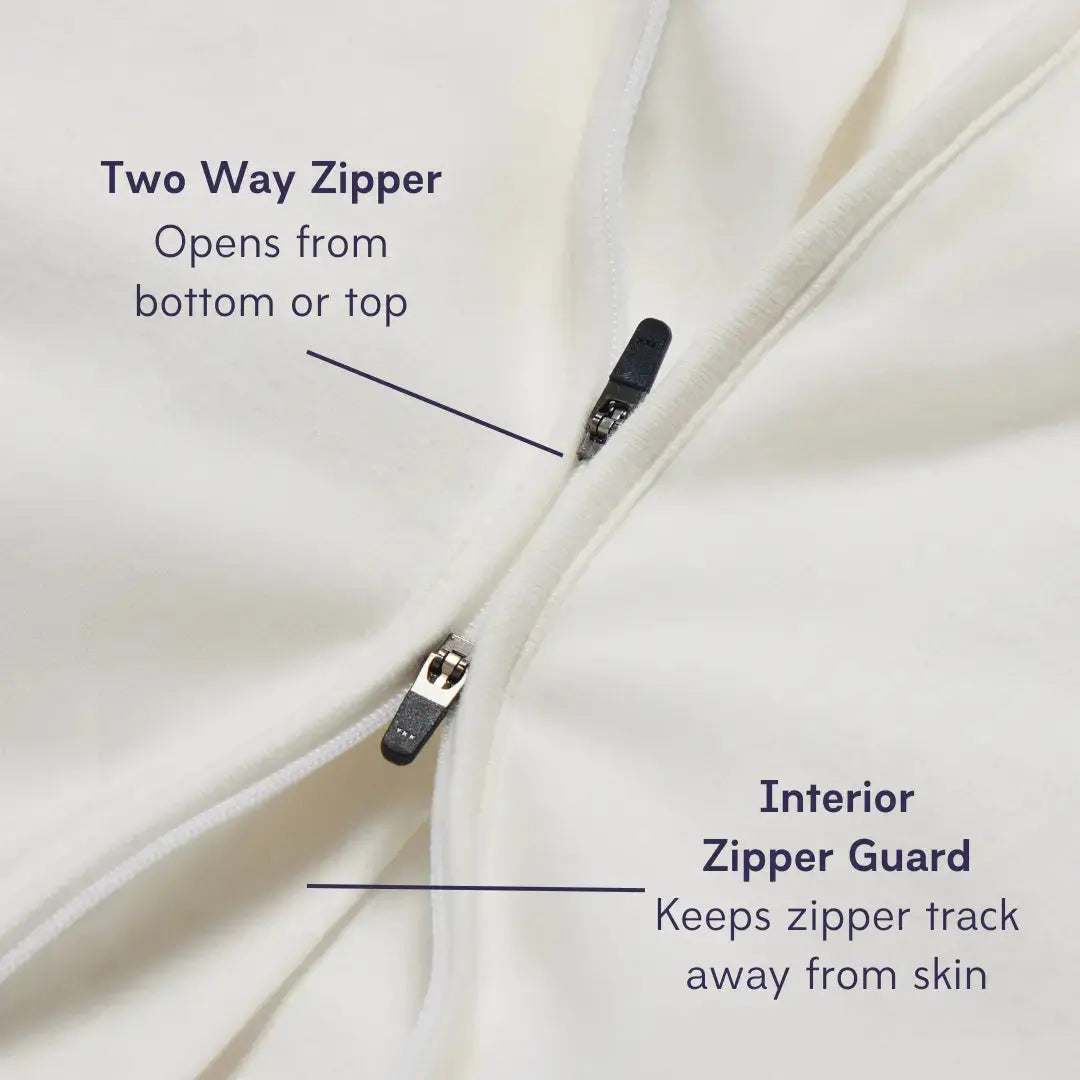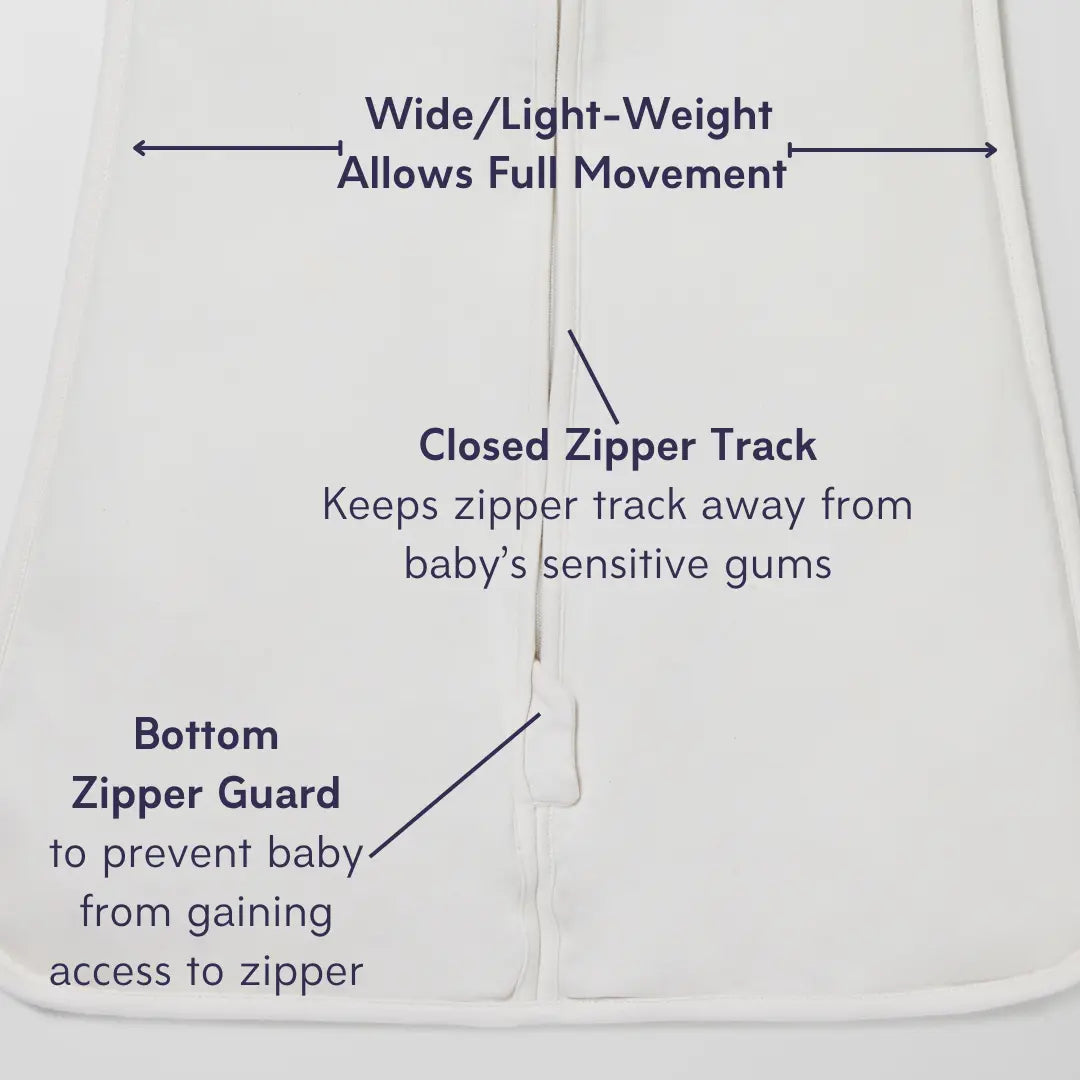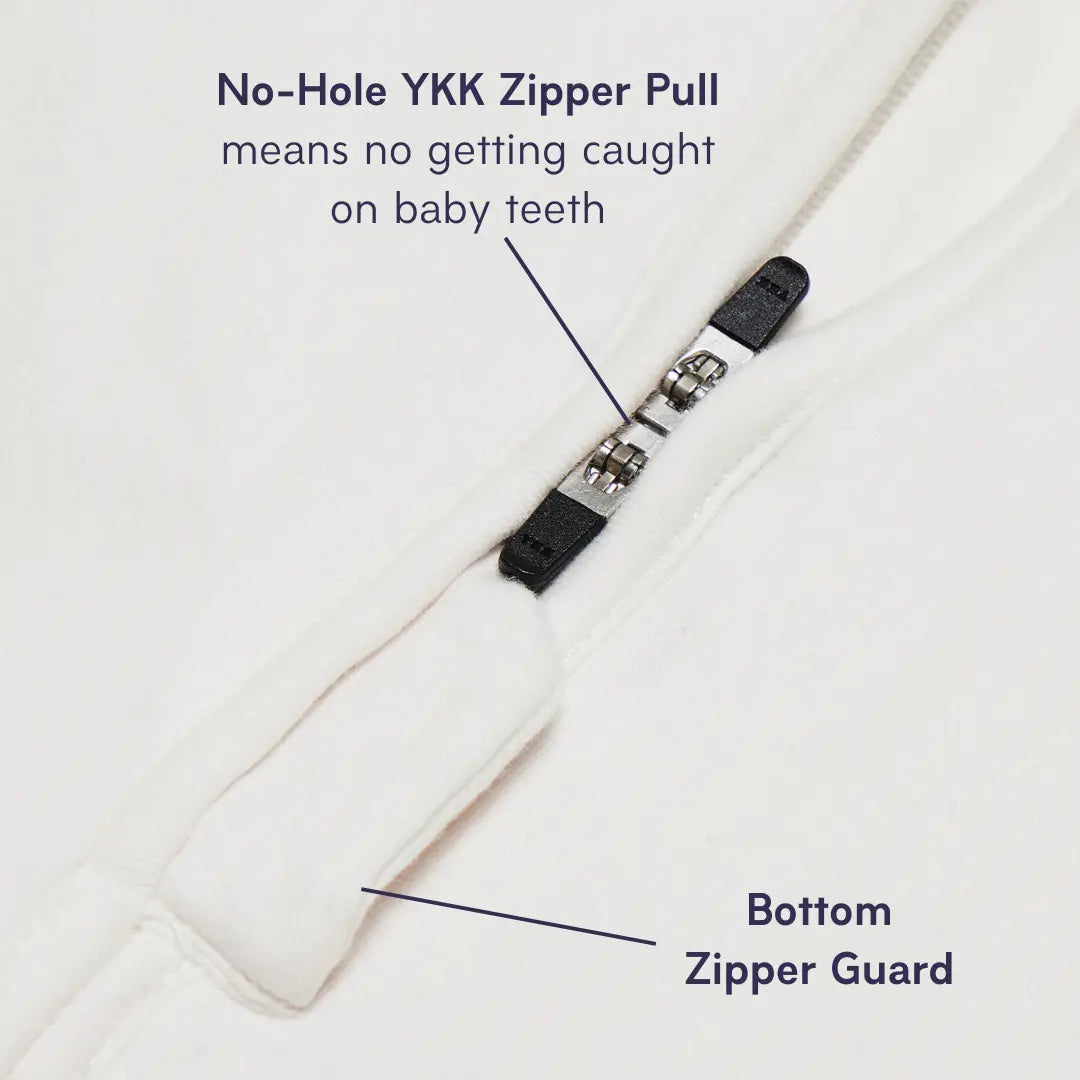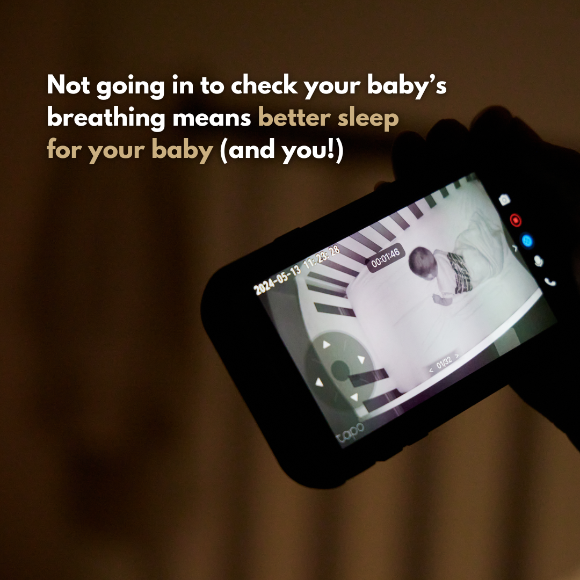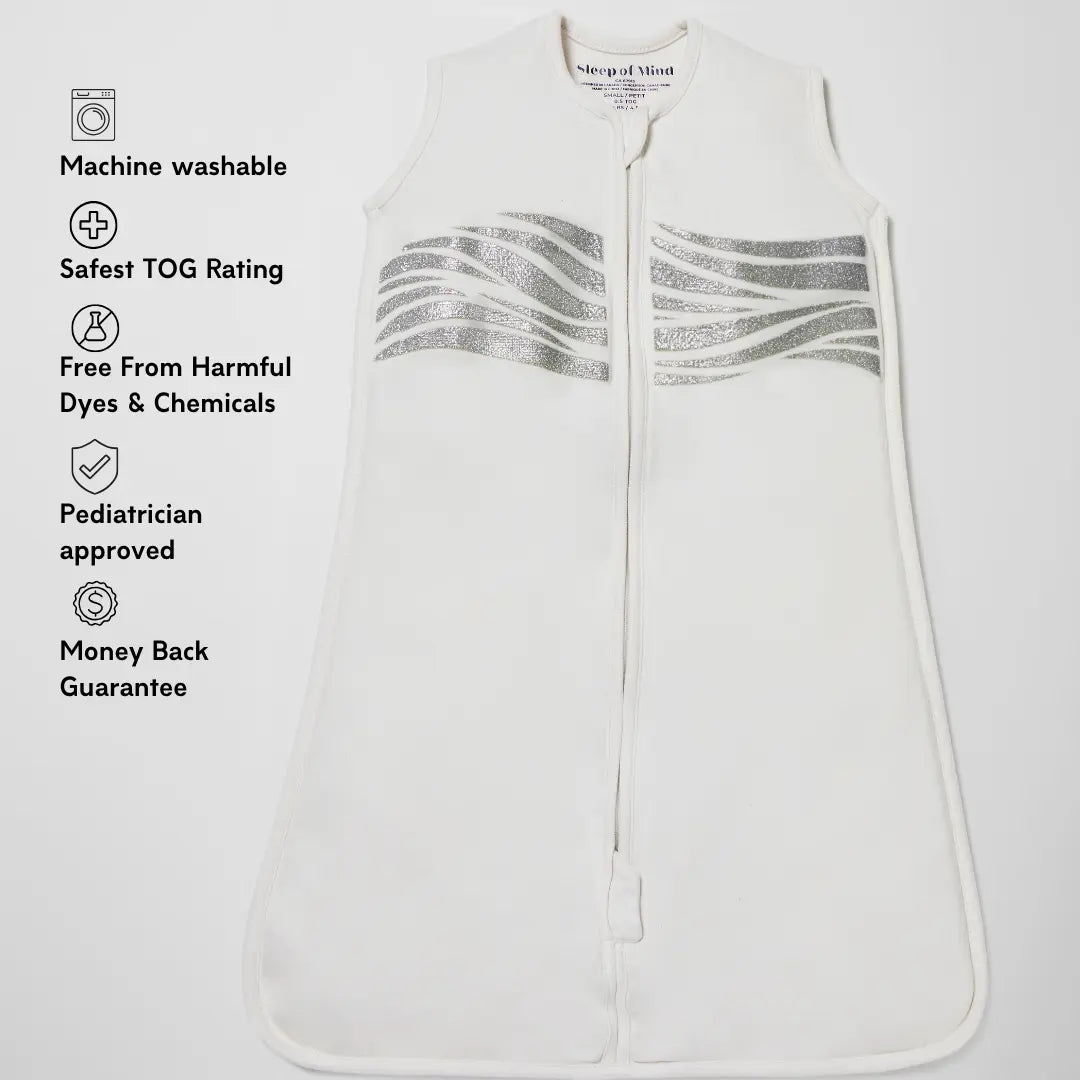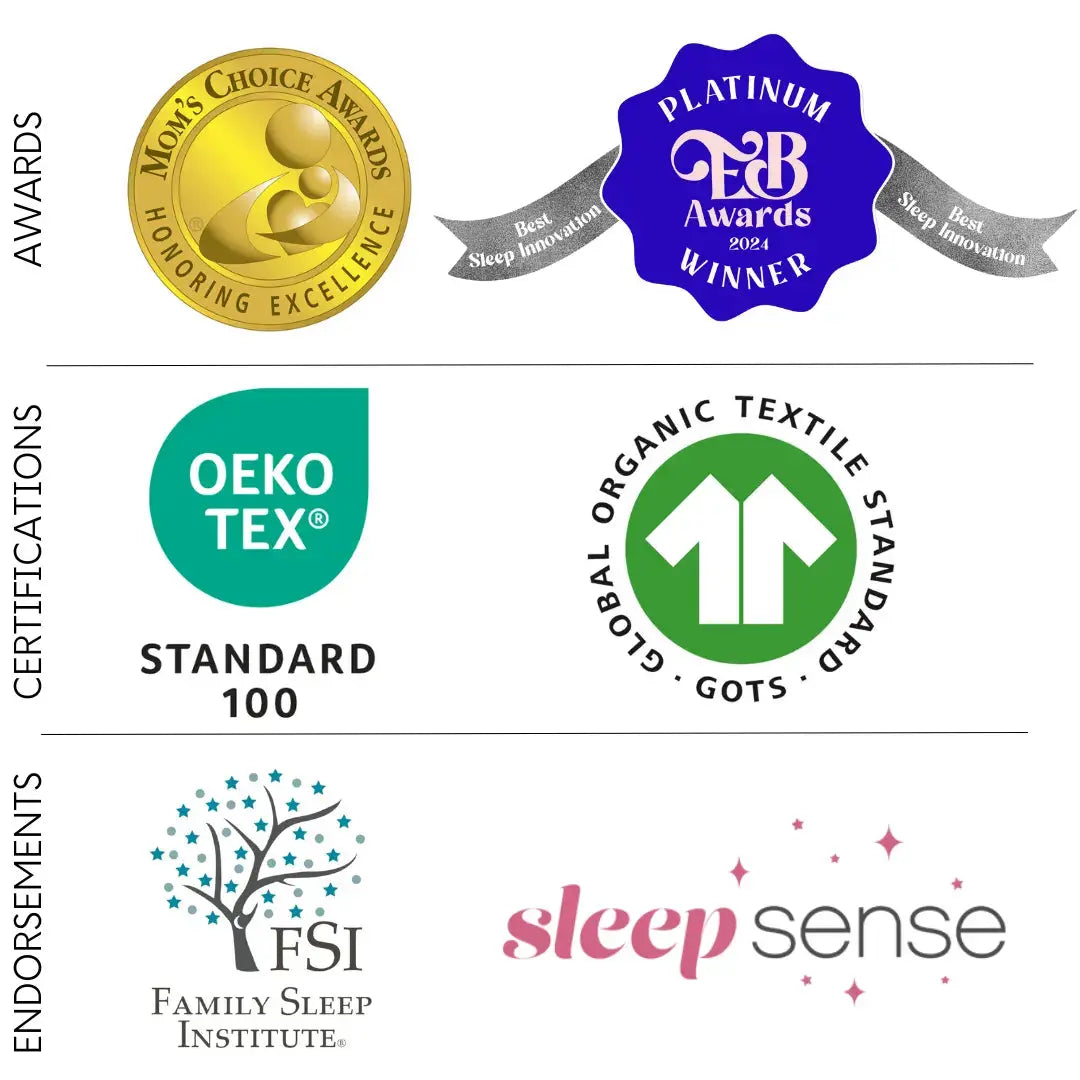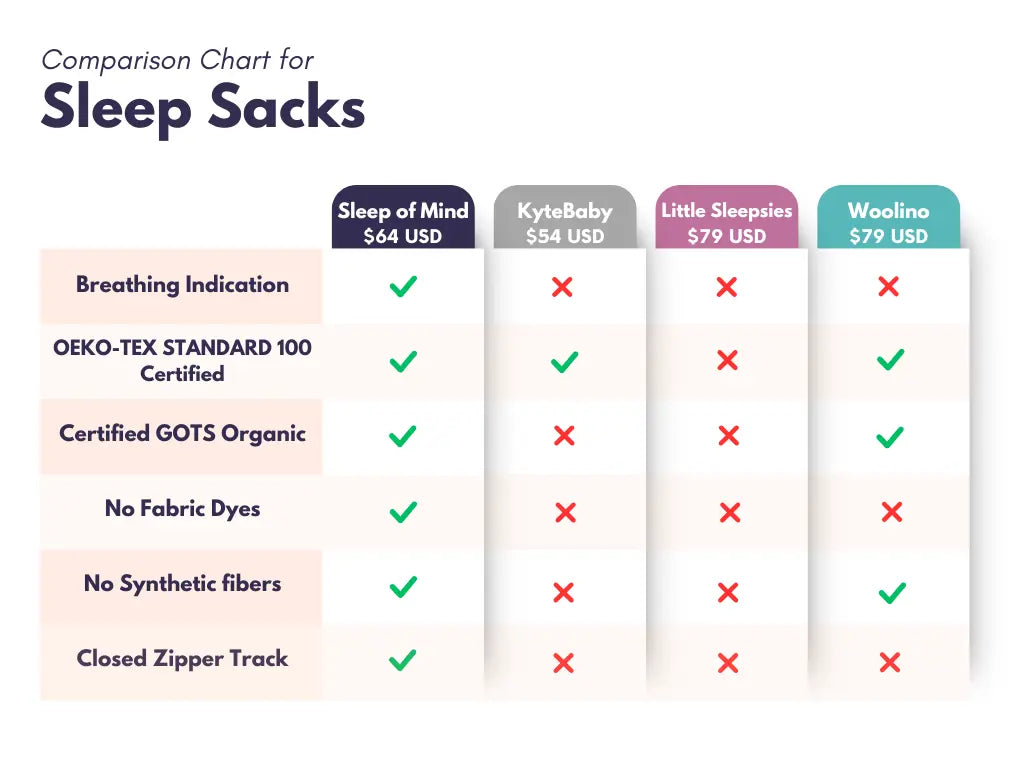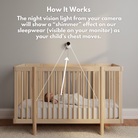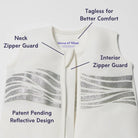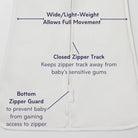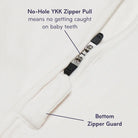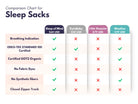Understanding the Baby Monitor Landscape
There are a lot of decisions to be made when preparing to bring home a new baby, from nursery color to diaper brand and everything in between. One essential choice parents will make is which baby monitor to buy. There are a lot of options to choose from, and deciphering a laundry list of features doesn’t always make the decision easy.
Sleep of Mind and Harbor have teamed up to cut through the noise and show you what features to look for to ensure that your monitor is secure, reliable, and works for your needs.
Baby Monitors 101
Today, there are generally two categories of baby monitors: Non-WiFi radio monitors and WiFi cameras with apps to run on your phone or tablet.
Non-WiFi radio monitors come with a camera and typically a dedicated 3–5-inch monitor. Some monitors can connect to multiple cameras, while others can’t. The pros of radio monitors are that they have a dedicated monitor (always see baby as you use your phone simultaneously), issue failsafe alerts for connectivity and low batteries, and are easy to travel with (they work in hotels that have their WiFi password protected). Radio monitors do not rely on WiFi, therefore, they are more secure, typically easier to set up, and have a more reliable connection. Their primary drawbacks are that they have limited range, may produce lower video quality, and don’t offer record and rewind functionality.
With a WiFi camera you can access the video feed on an app from your phone or tablet, but it does not come with a dedicated monitor. The benefits of a WiFi camera are that it can be accessed remotely and that footage can be recorded and stored. Having remote access to the baby monitor means that it has a greater range than a non-WiFi monitor, being accessible anywhere you have internet connectivity. This may allow a parent to step outside of the house and into the yard while their baby is sleeping, or checking in while at work. They typically offer higher video resolution and can be found at much lower price points (especially those designed to be security cameras). The downsides to a WiFi camera are that they rely on WiFi signals to be functional, don’t offer failsafe alerts, typically are dependent on unreliable and glitchy apps, and may have murky security policies. For those that offer playback functionality, cloud storage location (country) and security can also be an issue.

What to look for in a baby monitor
Monitor features can be a lot to take in, so let’s summarize the most important features of any monitor.
Reliability
You shouldn’t need to monitor your monitor. A good baby monitor should work for you whether you use a Wi-Fi-based or radio monitor. It should also notify you if the connection to the camera is lost, if the battery is low, or if anything else on the monitor or camera needs attention. Before purchasing a monitor, check out all of its features and read reviews of the product. Also, ensure it has a good warranty program.
Security
Whereas radio monitors make guest access impossible, most app-enabled monitors make it hard to keep track of who has access to your feed—something that can have scary security implications. If you go for a Wi-Fi-based monitor, ensure that the app you are using allows for two-factor authentication and privacy-first guest and caregiver access. If you pay for data storage, make sure you understand who has access to your data, where it is stored, and what happens once you no longer need your account.
Advanced Features
When choosing the right monitor for you, ensure it has these advanced features. Night vision is essential to viewing your baby while they sleep in a dark room. Night vision on a baby monitor works using infrared (IR) light. The monitor has infrared LEDs that emit invisible IR light, which the camera sensor detects to create a black and white image in low-light or dark conditions. This is key for the Sleep of Mind sleepwear, as it uses IR light to make it easier for you to see your baby breathing while they’re asleep. The reflective design on the Sleep of Mind sleep sacks, swaddles and PJ’s have a “shimmer” effect each time your baby’s chest rises and falls with each breath. Take a look at how it works. It’s a game changer for anxious parents as it means they don’t have to zoom in to the baby monitor or go check on their baby and possibly disrupt their precious sleep.
When using night vision, consider glare and reflection, as placing the camera too close to the crib or behind glass can distort the image. Some parents prefer non-visible IR (940nm) LEDs to minimize glow. The clarity and range of night vision depend on the strength and number of IR LEDs in the monitor.
In terms of other advanced features, your baby monitor should have motion and sound alerts, signaling that your baby is moving or making noise, as well as other alerts to notify you of camera connectivity and/or low battery.
Two-way audio can be very helpful when your child becomes a toddler and needs to call you at night. This ensures they don’t have to get out of bed to get you and can become a convenient way to reassure them when they need to hear your voice.
Temperature and humidity sensors are also handy; however, note that most baby monitors aren’t as accurate with these as a thermometer or hygrometer, so we suggest not relying on them and double-checking their accuracy with your own device, especially if the baby monitor is placed up high on the wall.

Picture and Screen Resolution
When choosing a baby monitor based on camera resolution, look for a model that provides clear and detailed images to easily see your baby’s movements and breathing. A 1080p (Full HD) resolution offers crisp video quality, while 720p (HD) is a good balance between clarity and affordability. Higher resolutions, like 2K or 4K, provide even sharper images but may require stronger Wi-Fi for smooth streaming. Consider the screen resolution on the parent unit as well—there's little benefit to a high-resolution camera if the display has low quality. If using a Wi-Fi monitor, ensure your internet connection can handle the video quality without lag or buffering. And as always, look at customer reviews to ensure others are finding the resolution quality to be accurate to what the specs list.
Baby monitor features to stay away from
Exclusively WiFi or app-based monitors
The most important feature of any infant sleep monitor is that it’s reliable. This means that it shouldn’t lose connectivity and, if it does, you should be notified immediately.
Relying exclusively on WiFi to connect to a camera means that a monitor cannot be used in spaces like password protected hotels or if the internet cuts out, while app-reliant monitors have no way to notify you that your connection has been compromised if the app crashes. If you use a WiFi based monitor then it's good to have a non-WiFi based monitor as a back up.
Biometric tools
In addition to cameras, companies like Nanit and Owlet have introduced biometric monitoring devices in recent years. Depending on the device, it can monitor a baby's breathing, oxygen levels, sleep cycles, and more. While these trackers appear well-intentioned, they can actually cause harm in more ways than one.
Biometric monitors aren't reliable. They can issue false alarms, which can interrupt parents’ sleep and exacerbate anxiety, and worse, they have also been shown to falsely indicate that a child is fine when they are experiencing hypoxemia (low blood oxygen).
It’s important to know that there is no evidence to demonstrate that biometric monitors save lives. The American Academy of Pediatrics advises against using biometric devices and instead urges safe sleep practices as a means of reducing a baby’s risk of SIDS.
Read more on this topic in our blog: The Truth About Home Apnea Monitors for SIDS
Why Harbor Is Setting Higher Standards For Baby Monitors
Harbor was created after co-founder and CEO Kevin Lavelle awoke to find that his infant’s Nanit camera had crashed with no notification. Fortunately, his son was safe, but the panic he felt upon realizing that his monitor couldn’t be trusted was something Kevin didn’t want to experience again.

He began researching baby monitors and, together with co-founder and CPO Charlie Hill, developed a monitor with all of the advantages of both radio and WiFi monitors and none of the downsides.
Today, Harbor exists as a dedicated, local Monitor that works with or without internet and securely connects to the cloud if and when you want it to. Because it can work with both radio and WiFi connectivity, it stays connected even if your internet goes out. You’ll be alerted to any loss of connection or if your battery is dying, so you can rest easy every night without having to monitor your monitoring.

But it doesn’t end there. One of the biggest game changers is the Remote Night Nannies! Harbor replicates the experience of a traditional night nanny at a fraction of the cost. Remote Night Nannies are pediatric nurses with vast experience in the medical field. When you use Harbor's RNN, Harbor will remotely watch your child while you sleep and alert you when you are needed for feeding and soothing through failsafe notifications. Plus, when your child is wearing a Sleep of Mind garment, this makes it even easier for the Remote Night Nanny to monitor your baby’s breathing since the reflective design allows for a quick glance at the monitor to see that all is well.
Harbor’s camera streams locally in up to 2K high resolution with premium night vision capabilities using minimal infrared light. Optional smart thresholds for noise, motion, and time reduce unnecessary disturbances, meaning that you’ll be alerted if and only if you’re needed.
How does Harbor compare to Nanit?

With security and privacy, there are three main areas of concern:
-
Where are the products made and what types of components are in them
-
Data storage
-
Communication security
You should know where your baby monitor and camera are made. Harbor’s production Monitors are made in Vietnam and Cameras are made in India. Critically, the processors (the devices’ “brains”) are made by Qualcomm and Ambarella, US, publicly traded companies that lead their industries. Virtually every other baby monitor company manufacturers their devices in China with Chinese processors with questionable firmware engaging with Chinese servers. Versions manufactured by some top baby monitor companies used processors now banned by the US government.
Mobile app-based cameras all store video/audio in the cloud. Who owns those servers? Where are they located? What are their security protocols? These are reasonable questions parents should have answers to, though you are very unlikely to get them. Harbor video/audio is only stored on the camera itself, with end-to-end encryption.
The cloud communication of other systems also creates vulnerabilities for live-streaming video/audio. All Harbor communication happens on your home network (unless you are outside of your home), secure through mutually-authenticated TLS (mTLS) and end-to-end encryption. Those are a lot of words that mean there are multiple, industry-leading moats they have created around a castle that they have built for you. As you and your family deserve!

More Peace of Mind
A monitor you can trust that won’t crash on you or send you false alerts, unlocks better rest and peace of mind for the whole family. From day one, Harbor has set out to build the most reliable, secure baby monitoring system on the market. They know from firsthand experience that raising children is hard, and it doesn’t necessarily get any easier once they start sleeping through the night. Harbor’s team of infant care experts supports families through challenges and changes at every developmental stage, from feeding schedules to evolving bedtime routines, postpartum care to infant constipation, and more. Plus pairing a Harbor monitor with the peace of mind from Sleep of Mind breathing reassurance sleepwear means everyone can sleep better with less worries.





